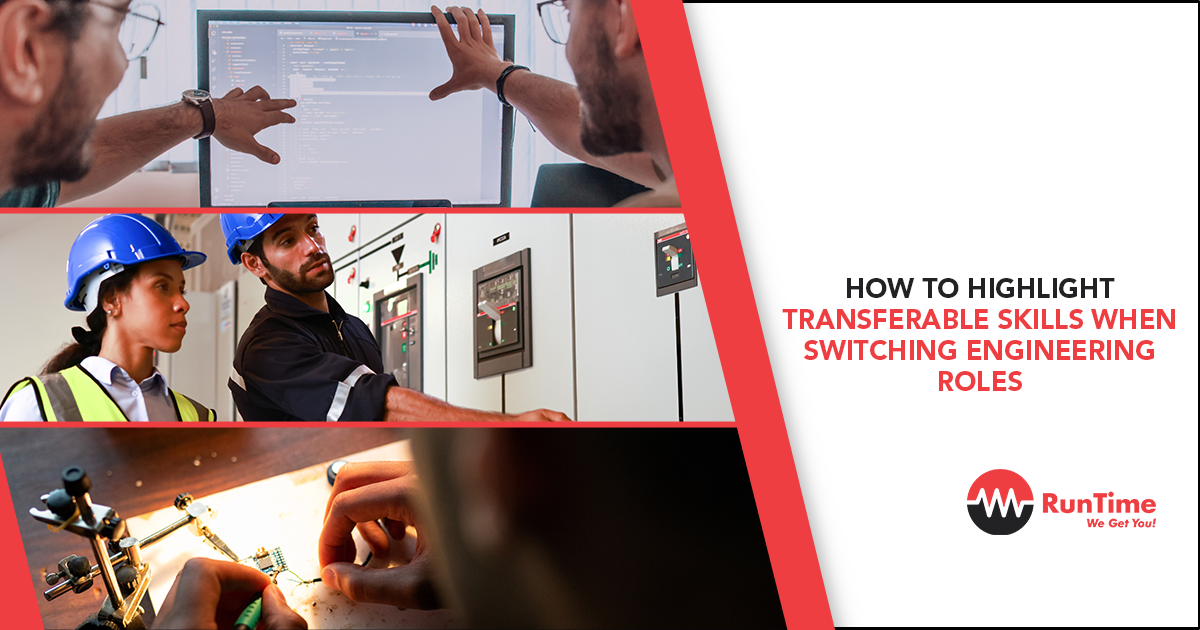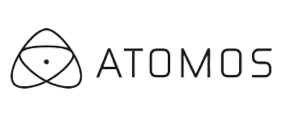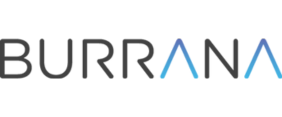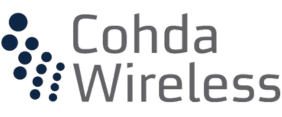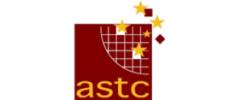Switching engineering roles can be an exciting yet challenging phase in your career. For embedded engineers, transitioning to a different engineering discipline—whether it’s IoT systems, hardware design, or even software engineering—often requires you to highlight the skills and knowledge you’ve gained in your current field. The challenge lies in identifying which skills are transferable and presenting them in a way that resonates with hiring managers in your target role.
This article delves into why transferable skills matter, how to identify them, and how embedded engineers can position themselves as ideal candidates when switching roles.
Why Transferable Skills Matter in Engineering
Engineering disciplines often overlap, especially as technology advances and industries converge. A hardware engineer might transition into firmware development, or an embedded systems engineer might move into IoT design or AI edge computing. Regardless of the specific career path, transferable skills are your bridge between your past experience and your new role.
Benefits of Highlighting Transferable Skills
- Demonstrates Versatility: It shows that you can adapt to new challenges and apply your expertise in different contexts.
- Leverages Experience: You’re not starting from scratch; transferable skills build on your existing knowledge.
- Reduces Learning Curve: Hiring managers value candidates who can hit the ground running without requiring extensive retraining.
- Opens Opportunities: Emphasizing transferable skills can position you for roles you may not have traditional experience in.
Identifying Your Transferable Skills
Before you start pitching yourself for a new engineering role, take time to analyze your current skill set. Transferable skills can be technical, soft, or domain-specific.
1. Technical Skills
Technical skills are often the easiest to transfer, especially if your new role involves overlapping technologies or workflows.
Examples for Embedded Engineers:
- Programming: Proficiency in C/C++, Python, or other languages used across multiple domains (e.g., machine learning, robotics).
- Microcontroller Knowledge: Understanding of architectures (e.g., ARM, AVR) applies to various industries, from automotive to consumer electronics.
- Communication Protocols: Experience with UART, SPI, I²C, and other interfaces is relevant across many hardware and IoT roles.
- Debugging Tools: Familiarity with oscilloscopes, logic analyzers, and JTAG debuggers is valuable in troubleshooting any engineering system.
- Real-Time Systems: Expertise in real-time operating systems (RTOS) can be leveraged in robotics, avionics, and industrial control systems.
2. Problem-Solving and Analytical Skills
Engineers are natural problem solvers. Highlighting how you approach and resolve complex issues demonstrates your ability to adapt to new challenges.
Examples:
- Debugging a failing subsystem by methodically isolating the root cause.
- Optimizing system performance under tight power or resource constraints.
- Designing creative solutions to meet conflicting requirements, such as size and functionality.
3. Project Management Skills
Even if you’re moving into a hands-on technical role, project management skills are highly transferable.
Examples:
- Coordinating cross-functional teams to deliver a product on time.
- Managing resource allocation for a project under budget constraints.
- Documenting processes and designs for regulatory compliance or future use.
4. Communication and Collaboration
Engineers don’t work in isolation. Your ability to communicate effectively with other engineers, project managers, or clients can set you apart.
Examples:
- Translating technical jargon into actionable insights for non-technical stakeholders.
- Collaborating with hardware and software teams to achieve system-level integration.
- Writing clear and concise technical documentation.
5. Industry Knowledge
Your understanding of an industry’s standards, regulations, or workflows can be a key differentiator.
Examples:
- Familiarity with automotive standards like ISO 26262 (functional safety).
- Knowledge of wireless communication standards (e.g., Bluetooth, Zigbee, LoRaWAN).
- Experience working in regulated industries like medical devices or aerospace.
Mapping Your Skills to the Target Role
Once you’ve identified your transferable skills, the next step is to map them to the requirements of your target role. This involves tailoring your resume, cover letter, and interview responses to highlight how your experience aligns with the new position.
1. Research the Target Role
- Read the job description carefully to understand the required skills, tools, and responsibilities.
- Identify gaps in your experience and think about how your existing skills can bridge them.
- Look for keywords that align with your background, such as “real-time systems,” “low-power design,” or “protocol development.”
2. Bridge the Gap
If you lack direct experience in certain areas, focus on skills or knowledge that overlap.
Example 1:
Moving from Embedded Engineering to IoT Development
- Overlap: Protocol knowledge (e.g., MQTT, CoAP), low-power design, and sensor integration.
- Bridge: Highlight experience designing embedded systems for remote monitoring or control, which are core IoT concepts.
Example 2:
Switching from Hardware to Firmware Development
- Overlap: Microcontroller architecture, hardware debugging, and performance optimization.
- Bridge: Showcase your experience writing test firmware or configuring low-level drivers.
Crafting Your Resume and Cover Letter
Your resume and cover letter are your first opportunity to demonstrate your transferable skills. Tailor them to highlight your most relevant experience.
1. Structure Your Resume
Organize your resume to emphasize transferable skills:
- Summary Section: Begin with a short summary that aligns with the target role.
- Example: “Experienced embedded systems engineer with a strong background in low-power IoT devices, proficient in C programming, RTOS integration, and communication protocols such as SPI and I²C.”
- Skills Section: List both technical and soft skills that are relevant to the new role.
- Experience Section: Focus on achievements and responsibilities that demonstrate your ability to excel in the target position.
- Example: “Designed and implemented an RTOS-based system for a low-power IoT sensor, enabling real-time data acquisition and cloud connectivity.”
2. Personalize Your Cover Letter
Use your cover letter to explain why you’re transitioning and how your experience makes you the ideal candidate.
- Acknowledge the Shift: Address the career change head-on and emphasize your enthusiasm for the new role.
- Connect the Dots: Clearly explain how your transferable skills align with the job requirements.
- Example: “While my background is in embedded systems, my experience developing low-power communication protocols and real-time firmware directly aligns with the requirements of this IoT developer role.”
Acing the Interview
Interviews are your chance to expand on the skills and experiences outlined in your resume. Here’s how to make your case:
1. Be Ready to Explain the Transition
- Be honest about your reasons for switching roles, whether it’s a desire to grow, explore a new domain, or leverage your skills in a different context.
- Frame your transition as a logical progression in your career.
2. Highlight Relevant Achievements
- Use examples from past projects to demonstrate your ability to succeed in the new role.
- Focus on results that showcase your transferable skills.
Example:
“During my time as an embedded engineer, I designed a low-power firmware solution for a remote sensor system. This involved optimizing communication protocols and integrating hardware sensors, which directly translates to the requirements of this IoT development role.”
3. Emphasize Adaptability
Hiring managers value engineers who can adapt to new challenges. Highlight instances where you’ve quickly learned new skills or tools.
Example:
“When my previous team needed to transition from bare-metal programming to an RTOS, I led the effort to learn and implement the new architecture, significantly reducing development time and improving scalability.”
4. Ask Smart Questions
Show your interest in the role and industry by asking thoughtful questions:
- “What challenges does the team face in [specific area]?”
- “How does this role contribute to the overall product lifecycle?”
Upskilling for the Transition
If there’s a significant gap between your current skills and the target role, consider upskilling through:
- Online Courses: Platforms like Coursera, Udemy, and edX offer courses on IoT, firmware development, AI, and more.
- Certifications: Relevant certifications (e.g., ARM Accredited Engineer, IoT certifications) can boost your credibility.
- Personal Projects: Build and showcase projects on GitHub to demonstrate your skills in the new domain.
Real-World Case Studies
Case Study 1: From Embedded Engineer to IoT Developer
Background: An embedded engineer with expertise in sensor integration wanted to transition into IoT development.
Approach:
- Highlighted experience with low-power communication protocols like Zigbee.
- Built a personal IoT project using MQTT and cloud integration.
- Earned an IoT certification to bolster credentials.
Outcome: Successfully landed a role as an IoT developer, focusing on edge device firmware.
Case Study 2: From Hardware Designer to Firmware Engineer
Background: A hardware designer with PCB design experience wanted to move into firmware development.
Approach:
- Emphasized knowledge of microcontroller internals and debugging tools.
- Took online courses in C programming and embedded firmware.
- Created a GitHub repository showcasing simple driver development.
Outcome: Secured a position as a firmware engineer, working on device driver development.
Conclusion
Switching engineering roles doesn’t mean starting from scratch. As an embedded engineer, you already possess a wealth of transferable skills that can open doors to new opportunities. By identifying and highlighting these skills, tailoring your resume, and presenting yourself confidently in interviews, you can successfully transition into your desired role.
The key is to focus on the overlap between your current expertise and the target role, demonstrate your ability to adapt, and showcase a genuine enthusiasm for learning and growth. With the right approach, your career shift can be a stepping stone to exciting new challenges and opportunities.

